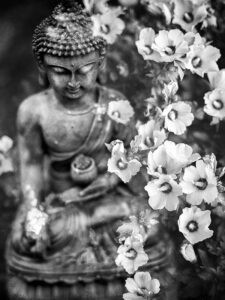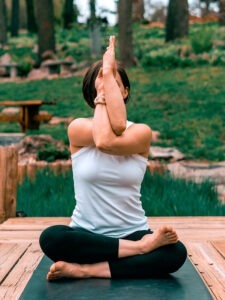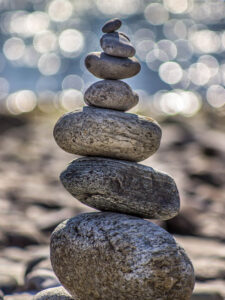Yoga is a physical and mental discipline practiced by millions of people around the world, but very few know the history of yoga, its origins and tradition.
The origin of the word ‘yoga’ is said to come from the word ‘jug’ in Sanskrit, the classical language of India, which means ‘to unite, connect, relate’.
Therefore, the aim of yoga is to generate and strengthen the connection between the human being and the universe. Through postures, correct movements and proper breathing, one can enter into perfect harmony, both physically and spiritually.
Historians and specialists in Indian culture find it difficult to pinpoint the birth of yoga, as the ancient texts of the Vedic culture are very difficult to decipher. And it is in itself a miracle to have some written material, because according to experts, this culture has been transmitted orally since its origins.
According to researchers, the first forms of yoga developed between 10,000 and 5,000 BC. This approach is based on the position of statues found in ancient sites, reminiscent of that of yogis, or yoga practitioners, when they practice meditation. There is evidence to suggest that the civilisation that originally practiced Yoga was peaceful, supportive and communal. The aim of Yoga at that time, known as Brahmanism, was to harness the power of the gods by practicing exercises that were quite difficult for both the body and the senses on a regular basis.
The history of yoga
Around the Xᵉ century BC (in High Antiquity), there was a culture that practiced Brahmanism, a ritual system that involved the practice of difficult exercises. It was much later, around the IVᵉ century BC, that the texts of the Yoga sūtra were written. Following the rules set out in this text, the different orders of yogis began to emerge: the Vishnus and the Shivais. This practice also joined, but not quite, the religious forms of Hindu culture.
From the second century AD, the practice of yoga began to reach other parts of the world. This was largely due to the Arabs, Greeks, Persians and Marco Polo, the famous Italian explorer.
Through the cultural and commercial exchanges that took place in the XVIᵉ century, new practices were discovered, such as yoga. The description of this discipline was translated and published in the West, so that the various Western texts place it between the XVIᵉ and XVIIIᵉ centuries. Those who were considered ‘great yogis’ took advantage of the nascent globalization that began in the XIXᵉ century to explain to the rest of the world what the true nature of yoga was. Examples include Swami Vivekananda (1863-1902), who organized several conferences on the subject; Bellur Krishnamachar Sundaraja Iyengar (1918-2014), who founded Yoga Iyengar; or Sri Krishna Pattabhi Jois (1915-2009), teacher of Ashtanga Yoga.
Over time, many yoga centres opened and many gyms began to incorporate yoga. However, it was in the twentieth century that the great heyday of yoga began.
Yoga today
Today, the discipline is practiced by millions of people spread across the globe. And no wonder, because yoga offers the perfect combination to achieve balance between body and mind. Through yoga postures, which require control and the development of flexibility and muscle, you can stay fit.
But the highlight of yoga is meditation. We live in an increasingly stressful world and yoga offers an effective way to relax through meditation, which allows absolute focus on yourself and the environment around you.
The practice of yoga is an ideal solution for coping with the problems of the 21st century, controlling anxiety levels, improving mental health as well as physical health.
The different forms of yoga
Yoga has diversified according to the contexts in which it is practiced. Five main “paths” can be distinguished:
1/ firstly, it accompanies human beings in their daily lives, helping them to establish the principles of the “right” or “selfless” act: this is karma-yoga, or “yoga of action”.
2/ It is also associated with religious and spiritual currents, within Hinduism or Buddhism, where it allows one to get closer to the divinity: this is bhakti-yoga or “yoga of devotion”.
3/ It refines the most subtle intelligence, that of realities considered beyond the natural, and is then called jnâna-yoga, or “yoga of knowledge”.
4/ Specific research concerning the body, the breath, the energies, has been developed and has given us the form of yoga best known and practiced in the West, hatha-yoga.
5/ The fifth path combines the four previous ones, it is raja-yoga, the royal path where all the possibilities of the human being are gathered and explored.
Let Mannat voyages organise your next trip to India and come and discover the cradle of yoga.










